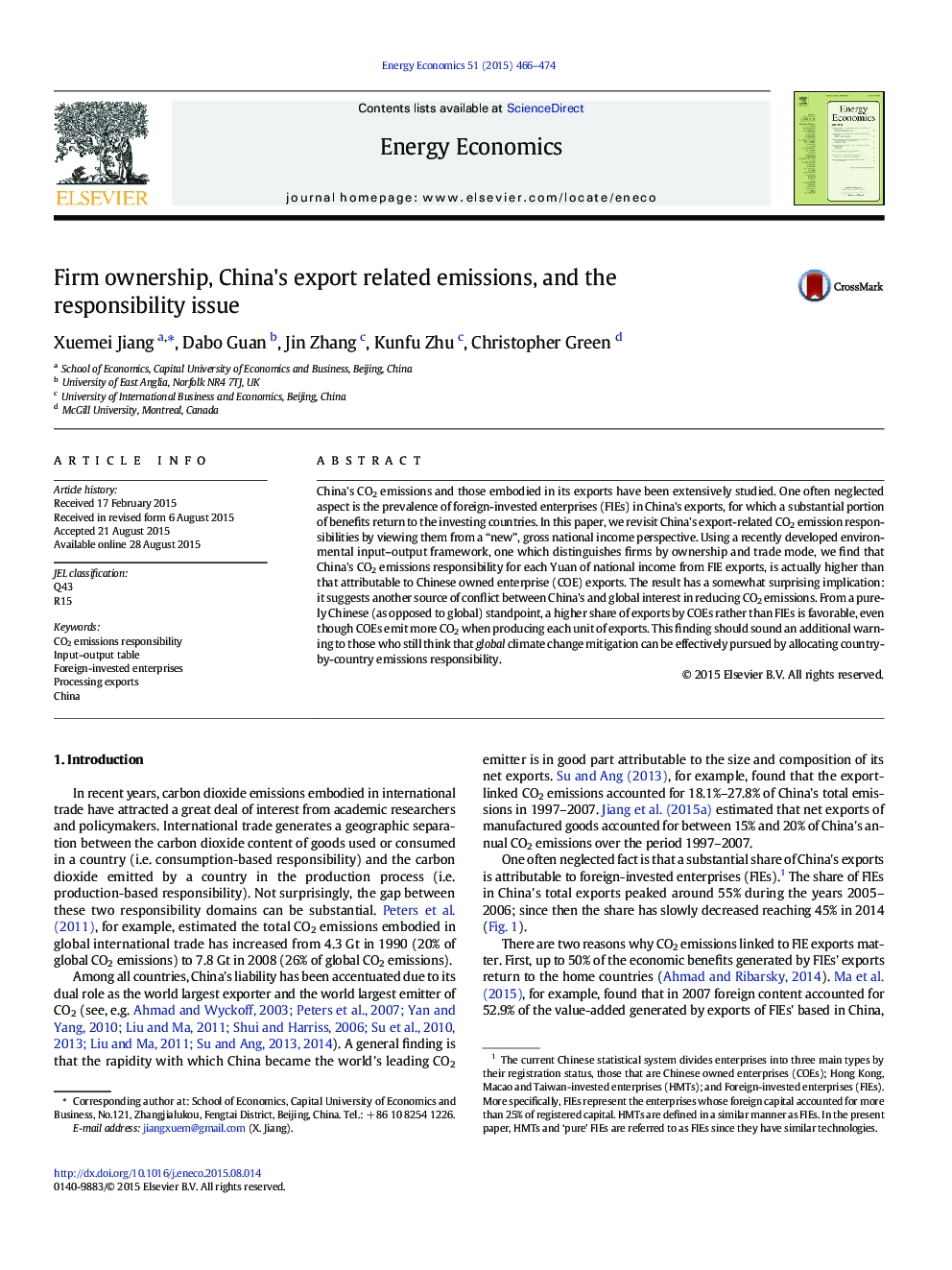| کد مقاله | کد نشریه | سال انتشار | مقاله انگلیسی | نسخه تمام متن |
|---|---|---|---|---|
| 5064266 | 1476712 | 2015 | 9 صفحه PDF | دانلود رایگان |
- China's CO2 emissions responsibility for each Yuan of national income from FIE exports, is higher than that from COE exports.
- The findings suggest a conflict between China's and global interest in reducing CO2 emission.
- The findings imply an importance of technology improvement in developing countries for global climate change mitigation.
China's CO2 emissions and those embodied in its exports have been extensively studied. One often neglected aspect is the prevalence of foreign-invested enterprises (FIEs) in China's exports, for which a substantial portion of benefits return to the investing countries. In this paper, we revisit China's export-related CO2 emission responsibilities by viewing them from a “new”, gross national income perspective. Using a recently developed environmental input-output framework, one which distinguishes firms by ownership and trade mode, we find that China's CO2 emissions responsibility for each Yuan of national income from FIE exports, is actually higher than that attributable to Chinese owned enterprise (COE) exports. The result has a somewhat surprising implication: it suggests another source of conflict between China's and global interest in reducing CO2 emissions. From a purely Chinese (as opposed to global) standpoint, a higher share of exports by COEs rather than FIEs is favorable, even though COEs emit more CO2 when producing each unit of exports. This finding should sound an additional warning to those who still think that global climate change mitigation can be effectively pursued by allocating country-by-country emissions responsibility.
Journal: Energy Economics - Volume 51, September 2015, Pages 466-474
